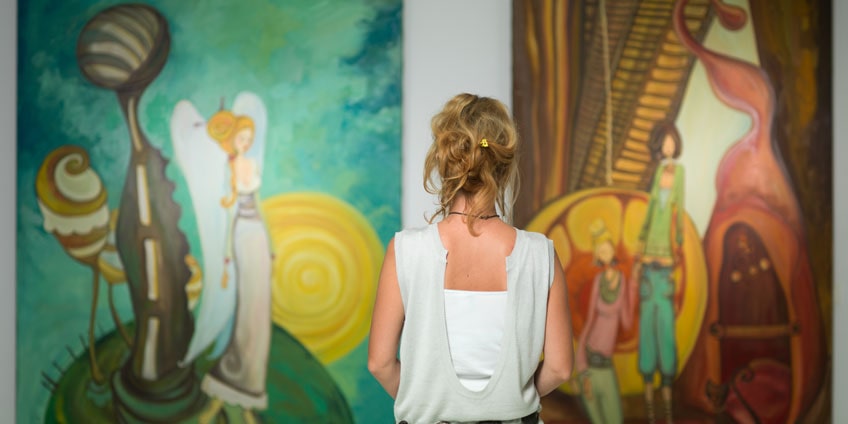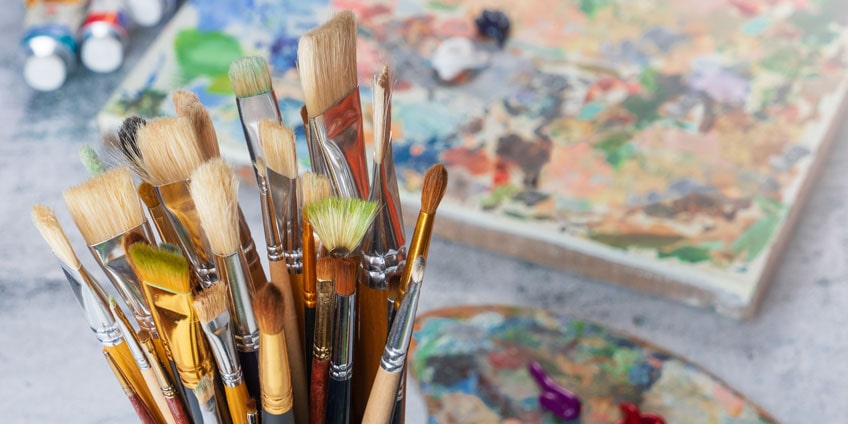Art is image in motion, an expression of the artist’s emotions on canvas, an immortal legacy. Is art only drawings and paintings? No, it is much more than that. Music, photography, filmmaking, and even printmaking can be called “an art”. So, when it comes to art essay, what are we supposed to write about? What is art essay, after all? Usually, it is a piece of writing that requires a student to analyze the work of art in details. In most cases, the professor gives you a certain painting or drawing which you need to write your essay about.
So, does the structure of an art essay differ from the regular paper? What should you describe and focus on? What is the basic format of the art essay? Yes, it will be easier for you to type “cheap essays” and get professional help. However, if you want to write a paper on your own, read on to complete the work in 15 minutes.
Things You Should Know Before Writing an Art Essay

Treat art essay writing like a jigsaw puzzle. Be the detective. They all come into the crime scene, see what is going on, analyze it, and then come to a conclusion. Art essay is almost like storytelling – you are trying to make up a true story based on the evidence that you see. We think it is enough with comparisons, it is time for real tips.
1. Do the Research
Yes, like in any other type of writing, an extensive research stage is mandatory for the art essay. Whether you like it or not, you have to know the background information about the artist, the time period he or she lived in, a style the artist uses in the painting, etc. Based on those insights, you will write an art essay in no time!
2. Make an Outline of the Essay
Compose a draft of how you plan on writing the art essay. Using the information from research, jot down the key points you have to mention in the essay. The structure and a step-by-step guide on how to do that you can find below.
3. Checklist
Use the following checklist and special terms to describes the formal elements of the painting such as line, shape, value, light, color, texture, space, motion, style, etc. Go through every single element before handing in the art essay.
Line: actual, implied, contour, cross-contour.
Shape: geometric, tectonic, volume, atectonic, mass.
Color: shade, value, saturation, primary, secondary, complementary, optical, chromatic, monochromatic, warm/cold, tint, tone.
Space: shallow, deep, relative size, vanishing point, overlapping, atmospheric perspective, linear perspective.
Motion: blurring, kinetic motion, dynamism.
Style: realistic, abstract, expressive, non-objective, conceptual.
Principles of design: movement/directional forces, focal points, proportions, repetition, balance (symmetrical, asymmetrical, radial).
Subject matter: title, interactions/ narratives, symbolic meanings, iconography, references to history, ideology.
Art Essay Analysis

Whenever you look at an image, you need to soak in that painting and figure out what it is you are looking at. You never sit down and wait when a perfect essay intro or conclusion just magically comes out. Writing of any art piece is based on a simple act of looking closely. But if you need more detailed instruction, here it is.
Step 1: Make a Mind Map for Your Essay
In other words, you need to organize your ideas visually. This is kind of making a little chart. You have to make a mini copy of the painting. The drawing does not have to be perfect, the main point of it is to see the shapes more clearly. Then, make little offshoots where you are considering the description or general observations. So, it is not about what you think but what you see. “She is ugly looking” or “she is beautiful” is not going to work. We want you to jot down something like this: “female sitter”, “¾ of me”, “yellow clothing”, “dark room”, etc.
One of the first things you can do when approaching a work of art is to start describing it. Look for formal properties. They refer to the physical object itself and format analysis. Pay attention to the interior or domestic space, extreme attention to textures like the ribbons on girl’s hair, the pearls in her earnings, the feather on her quill, a luminous skin. Where is the light source? What is the contrast? Where is the setting? So, the thing to keep in mind are the elements of art which we have mentioned above: line, color, light, shape, figures, space, surface plane, and texture.
None of these has to be complete sentences, just little thoughts. There is a warm yellow, deep turquoise, neutral background, high contrast. So, keep brainstorming until you run out of things to think about.
Step 2: The Nutshell of Art Essay
Based on your observations, describe it in a nutshell what is being represented. What does the artwork remind you of? When you look at the painting, what do you immediately think of? Does the artist create an illusion of space on a flat surface? (One of the ways to do that is by using diagonal line that appears to recede into space or foreshortening).
Start thinking about the subject matter, the content of this piece of art. Does it tell a story from mythology, history or the Bible? When it comes the art of the 21st century, it is a little more difficult to find a background because there may be no overt story. Then, the last and perhaps the most important way to understand a work of art is to think about the context which that piece of art was originally embedded in. What did the world look like when this painting was drawn? Who asked to have it made? What was happening economically, politically, socially at that moment? What did the work of art mean to the artist and culture? How did it change up to the present moment?
This is what you actually need a research stage for.
Step 3: Evaluate the Piece of Art
Is the work of art effective? Whatever you say here should be based on what you see visually. So, what has the artist done well? What stands out to you? What has the artist achieved in this painting? For instance, you can write that the image pulls the viewer into the center of a private moment with extraordinarily realistic details. If you want to evaluate the composition for your art essay, think about the painting as a stage direction. Where does the artist place the main actors? What is their relationship to the landscape and one another? What is the artist asking you to look at? What is he or she drawing your eye to?
Step 4: Organize Ideas for Your Essay
Your structure of art essay should look like this: description – analysis – and evaluation. So, all you need to do now is organize all of the brainstorming into paragraph format. Begin by labeling your artwork (the title, the artist’s name, the date, medium, and museum collection that it belongs to) and end up with describing your feeling when you took a first glance at the painting.
They say art speaks where the words are unable to explain, and your goal is to find these words.
